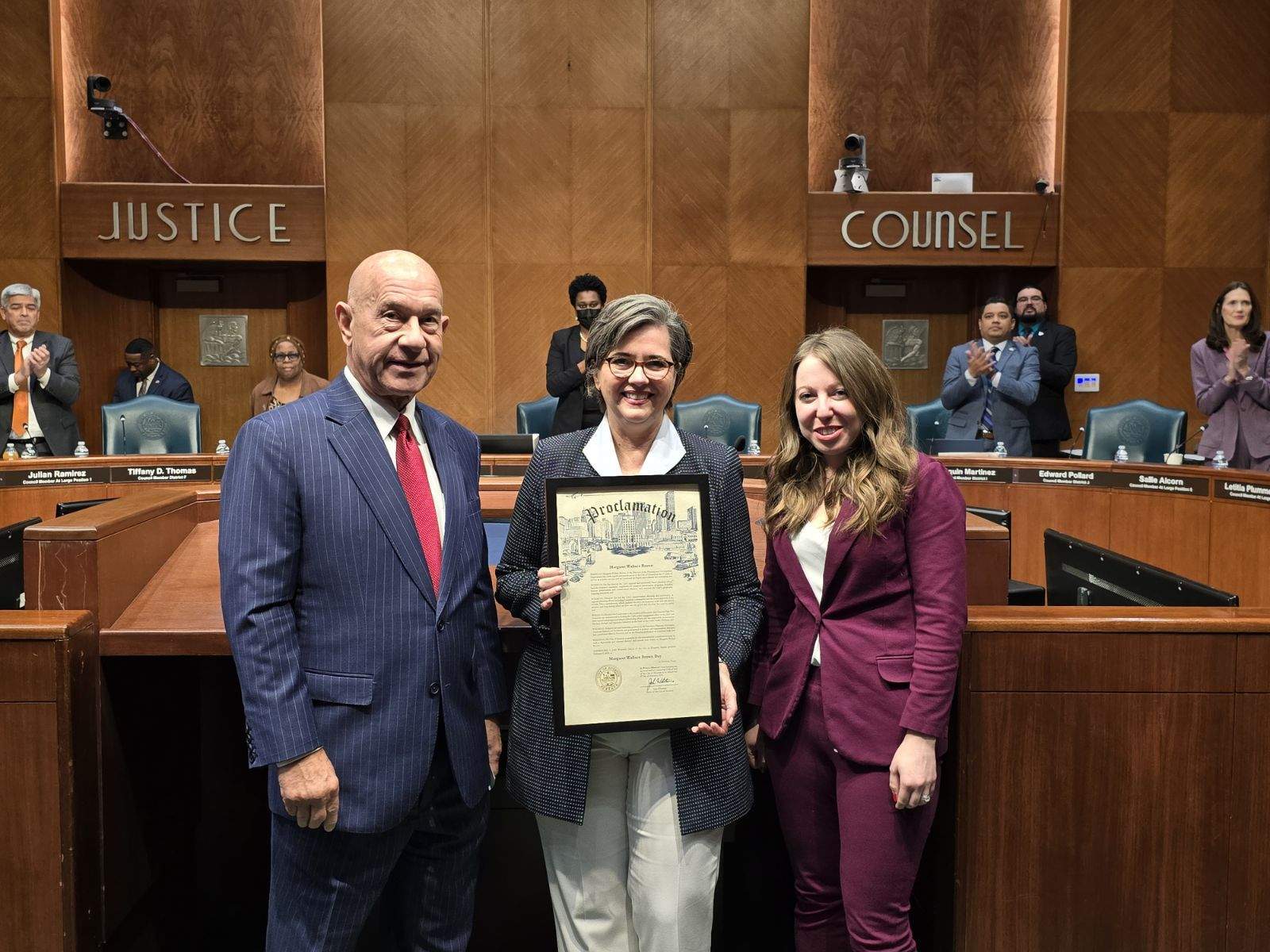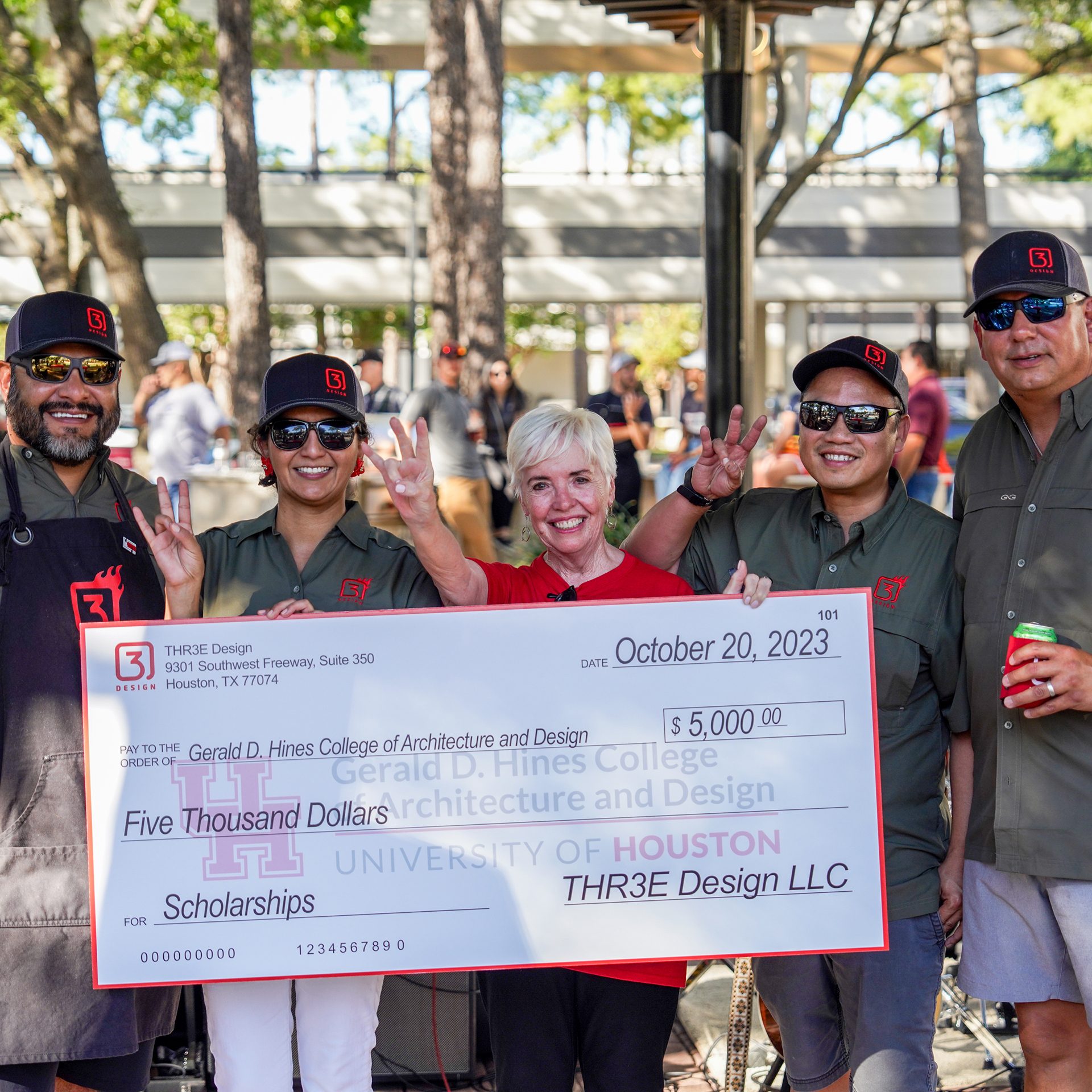Connecting History and Culture through Architecture
Hines College students develop winning work to inform the public and bridge cultural divides
by Nicholas Nguyen • March 11, 2024
On a winning streak since 2020, University of Houston Gerald D. Hines College of Architecture and Design students have seen success at the American Institute of Architects (AIA) Fort Worth Excellence in Architecture Student Design Awards again!
Michelle Ashley Ovanessians (B.Arch. ’23), Ileana Luna, and Vivian Nguyen earned merit awards in February for their outstanding projects. All three students worked with assistant professor Dijana Handanovic, a reader for Ovanessians’s thesis project and the instructor for Luna and Nguyen’s studio. Incredibly proud of her students’ work and achievements, Handanovic felt honored to be part of their journeys.
“Seeing their hard work recognized with an AIA award brings me immense joy,” shared Handanovic. “I believe this award is just the beginning for each of them, and I am excited to witness the amazing things they will achieve in the future.”
Luna and Nguyen, current students in the interior architecture program, worked as a team on “Kaleidoscope of Cultures.” Ovanessians, a recent graduate, has also previously earned AIA Fort Worth and Houston design awards for other student work. Last year, she received the Payette Sho-Ping Chin Memorial Academic Scholarship from the Architect’s Foundation.
above: Drawings and Renderings from Ovanessians's thesis project
Challenging Norms, Embracing Awareness
For her winning thesis project, “Armenian Genocide, rituals and how we memorialize – Criticism of Monuments and Memorials Towards a New Methodology,” Ovanessians felt driven to educate people about the Armenian genocide, a point of history many may not know about.
“My project endeavors to question the effectiveness of memorials and monuments in preserving historical memory, highlighting the consequences of collective forgetting,” explained Ovanessians. “This exploration is fueled by a desire to understand the critical role architects can play in educating the public about past atrocities and broader social issues.”
Believing history tends to repeat itself, Ovanessians hopes architects will leverage their talents to help encourage critical thinking, learning, and empathy. In “Armenian Genocide,” she examined traditional typologies of monuments and memorials and proposed a new typology interwoven into the daily lives of New Yorkers. In contrast to monuments, memorials need engagement to understand their function, offering personal experiences and connections. To her, memorials also create contemplative spaces.
above: Drawings and Renderings from Ovanessians's thesis project; a portrait of ovanessians
“My project advocates for a shift in design thinking, recognizing the affective nature, longevity, and collective memory-shaping role of these structures within the cultural and historical landscape,” she added. “This recognition, presented at the ceremony and now, digitally serves as another form of memorialization for the Armenian genocide, showcasing the importance of such remembrance even within academic spheres.”
Central to her thesis project is how architects can effectively raise awareness. Ovanessians’s future plans for the project include delving deeper into the concept of architectural remembrance and exploring innovative ways architects can raise awareness about historical events. Her goals also include potentially creating something tangible in Armenia to actualize the project and reconnect with her roots.
The merit award affirms her ideas with the thesis project, aimed to create conversation and dialogue about these ideas. She wishes to inspire students to confront difficult topics and illuminate histories that impact them. With this award under her belt, she has effectively used “Armenian Genocide” as a proof of concept to demonstrate how architects can shift public thinking through research and design.
above: Drawings and Renderings from luna's and nguyen's project
Reimagining Communities
Aimed at addressing the ethnic divisions in Sarajevo, Bosnia-Herzegovina, “Kaleidoscope of Cultures” is an urban intervention inspired by the ethnic and religious characteristics of the region. Luna and Nguyen researched the city and integrated the shapes and forms found throughout Sarajevo to reflect its diverse architectural styles for their project. They created a multifunctional space consisting of screens, flowing fabrics, shelves, and seating on their site, “Meeting of Cultures.” The existing site is a marker for where the prominent cultures in Sarajevo merge. They drew upon history to inform their ideas.
“Our project drew its inspiration from the architectural backdrop of the Bosnian Wars and its enduring scars due to ethnic division,” shared Luna. “We saw the impact of architecture not only as a physical construct but as a symbol of identity, memory, and reconciliation.”
above: An image from luna's and nguyen's project; the full-scale model they built; the team at the aia fort worth design awards ceremony
The effects of war left communities fragmented, prompting the team to envision structures creating healing and unity. Luna and Nguyen wanted to bring people together socially for events like concerts and shows and allow for spaces where people could contemplate alone.
Not only did they find the design process rewarding and invigorating, but the merit award they earned motivates them to push boundaries and embrace challenges with the support they had for their project.
“More than just an acknowledgment of our achievements, the merit award is a testament to the support and guidance we have received from mentors and friends along the way,” Nguyen acknowledged.
They hope their work bridges divisions through the mindful integration of cultural elements and creates inclusive spaces where people feel a sense of belonging through architecture.
More College of Architecture and Design Stories

On February 6, 2024, the City of Houston proclaimed a day in honor of Margaret Wallace Brown's (B.S.' 83) service to the City and her retirement as the Department of Planning and Development director.

William Williams' ('89) time at UH helped him learn to collaborate with others. He said, "The Hines College has always been one of the most diverse programs in the country, and I mean that in ways beyond its clear racial diversity."

What started as a barbeque competition ended with a new student scholarship for the Hines College. THR3E Design awarded the Hines College a gift of $5,000 – the first gift supporting a $25,000 endowed student scholarship.





